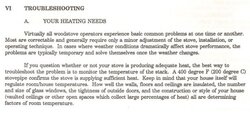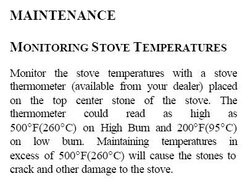This is my first soap stone stove, and I would like to ask the owners of other soap stone stoves. All my previous stoves were older steel stoves.
What temps do you run the stove at? Top temp, and where you measuring them, and what you using to measure it?
Just want to make sure I'm working the stove at the right temp.
Thanks,
Bondo©
What temps do you run the stove at? Top temp, and where you measuring them, and what you using to measure it?
Just want to make sure I'm working the stove at the right temp.
Thanks,
Bondo©





